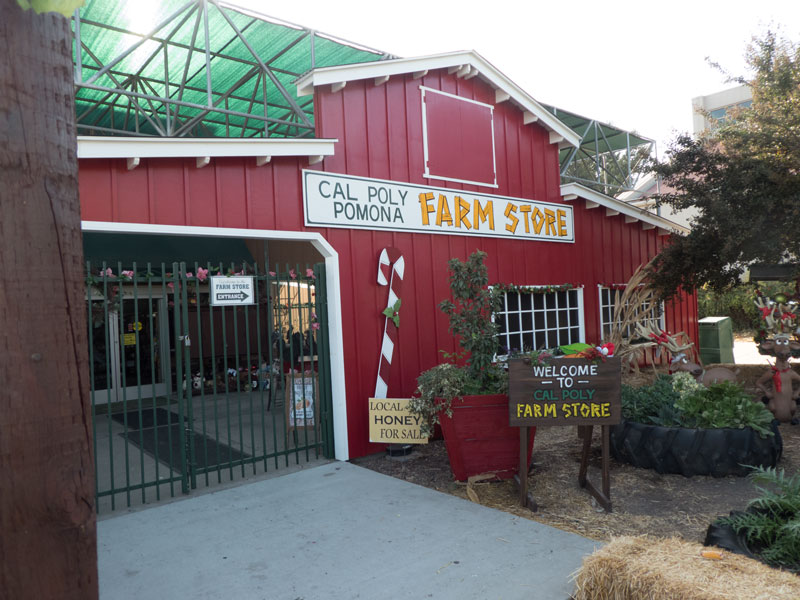
Bee Class at Cal Poly Pomona
November 11, 2017
P. Michael Henderson
Although I read everything I can find on bees, there's no substitute for hands-on education. Cal Poly Pomona had a one day seminar which included working with hives, so I signed up for it.
The class was limited to 50 people and were were broken down into five groups of ten. Every hour we rotated to a different station taught by a different person - five in all.
Here's a picture of the Farm Store at Cal Poly - I took this while I was waiting for the class to start.

Here's Bill, our first instructor. I don't have his last name with me. If I get it, I'll update the page.
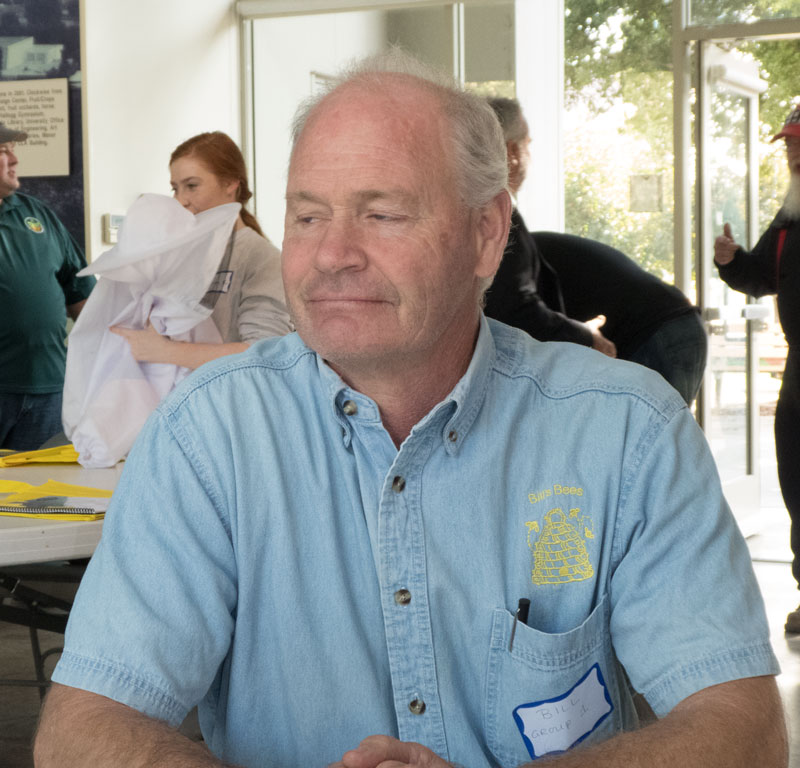
I was the only person in our group that already had bees. All of the others were thinking of starting beekeeping so the information was pretty basic.
Here's Bill getting ready to open a hive. He talked about getting the smoker going and how to introduce the smoke. Randy Oliver did a very good job of this in the last class I went to.
I left this picture wide so you can get a feeling for the Cal Poly bee area.
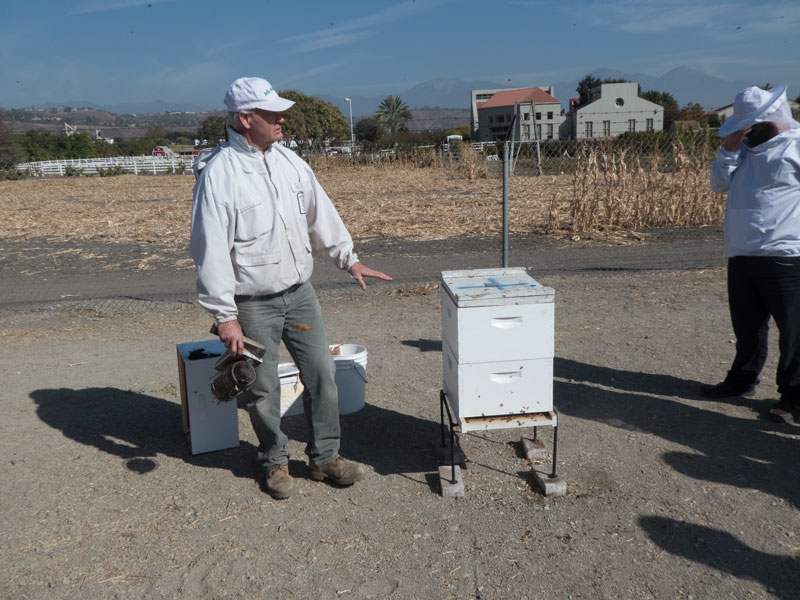
Here's the hive opened. The bees were standard European and very docile.
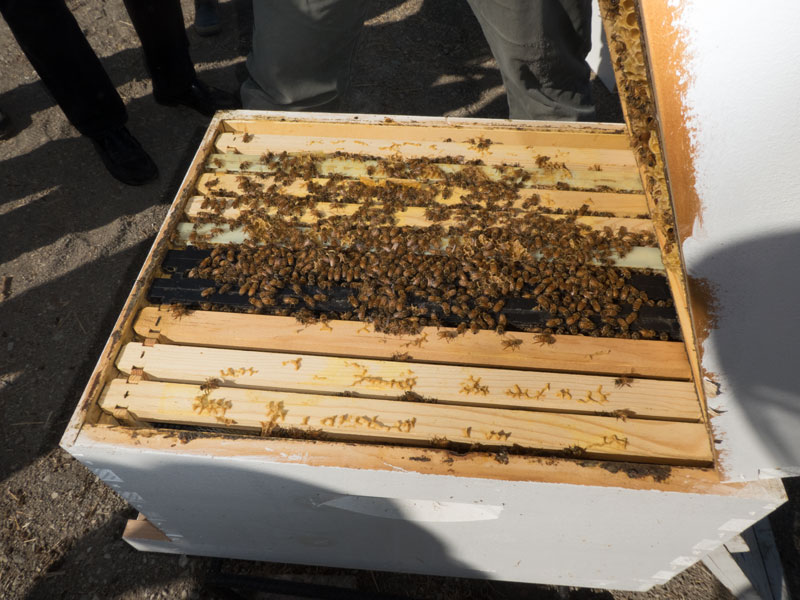
Bill talked about looking for a frame of brood to determine the health of the hive and the queen. Here's a frame of capped brood.
[Info from other sources] Bees work in a "ball" in the hive. That is, if you visualize a ball, like a soccer ball in the middle of the frames, the center will contain the brood. Around the brood will be pollen, and outside the pollen will be honey. The bees expand the "ball" as the hive grows, and contract it in the winter as the hive shrinks. Generally, the queen will not cross capped honey so she stays in in the brood section of the "ball".
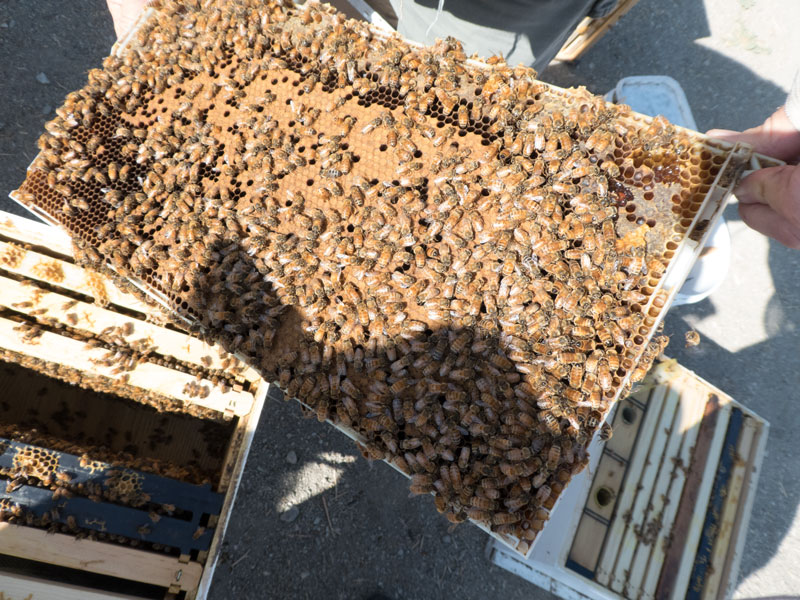
After the first station, we went to station 2 where Rob was talking about treatments for various diseases and pests. Mostly, it was about treating for varroa mites. I'm afraid I didn't pay a lot of attention because I'm pretty familiar with varroa mite diagnosis and treatment from Randy Oliver's presentations. And since I keep feral bees, I don't have a problem with varroa mites.
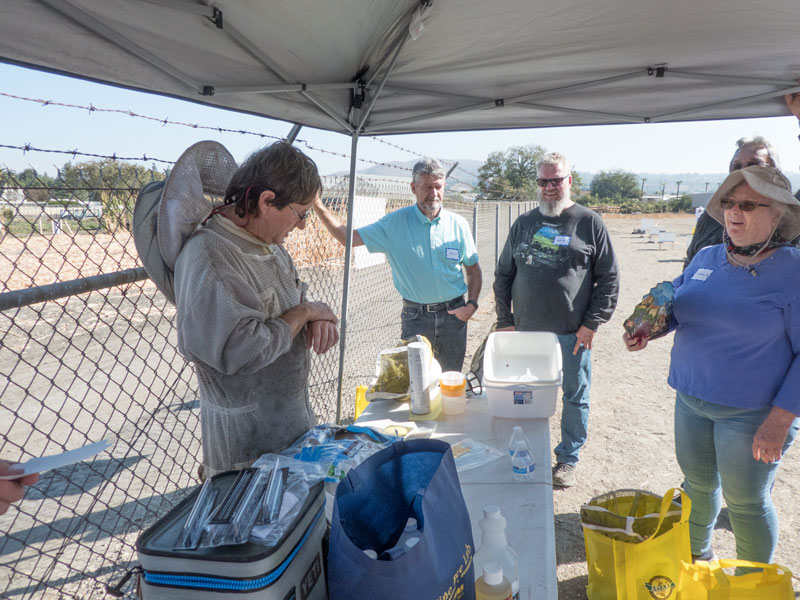
After the talk under the canopy we went to a hive and Rob demonstrated the alcohol wash method of determining the varroa "load" in the hive. I didn't do a good job of taking pictures because I just wasn't very interested. Several of the presenters at the seminar seemed to think that all feral bees are dangerous. Rob, especially, had that attitude. But anyone who has worked with feral bees knows better. You can encounter very defensive feral bees but they're in the minority. Most are pretty docile. The ones I have now are as docile as European bees, and may even be European bees. According to Randy Oliver, about 10 percent of European hives show varroa sensitive hygiene (VSH), meaning that they groom varroa off each other and can detect infected brood - and clean out the infected brood. If commercial bees are 10 percent VSH, European bees that are feral are essentially 100 percent VSH or the hive wouldn't survive (A DNA census of feral hives in California indicated that 70% were Africanized and 30% were European with no African genes). Varroa are in EVERY hive, even feral hives. That's why I like to do a cutout of a hive that has been established for a couple of years. Not only can I take the brood comb and honey comb and put it in frames to give the hive a fast start, but I know the hive is VSH. A swarm can be from a non-VSH hive, or can even be a group that absconded because they were overwhelmed by varroa. If you hive one of those swarms, they will not survive.
And even among hives that have some African genes, the excessive defensiveness is not always expressed. As I talked about this earlier, excessively defensive feral hives in an urban setting would be destroyed pretty quickly. Feral hives HAVE to "lay low" and not bring attention to themselves. The best thing we, as beekeepers, can do is destroy any hive that shows excessive defensive behavior to keep those genes out of the wild pool. In Africa there are environmental pressures for the hive to be extremely defensive. In US urban areas, there is environmental pressure for the hive to be docile.
One of my feral hives was somewhat hot - had been for several years - but not enough to be a problem. Then,one day, I went into the bee yard and that hive was as docile as can be. I suspect that hive superseded the queen, and the new queen mated with drones from a docile hive. It would take about six weeks for the genetics of the hive to turn over but by that time, all the bees would be of the new genetic makeup.
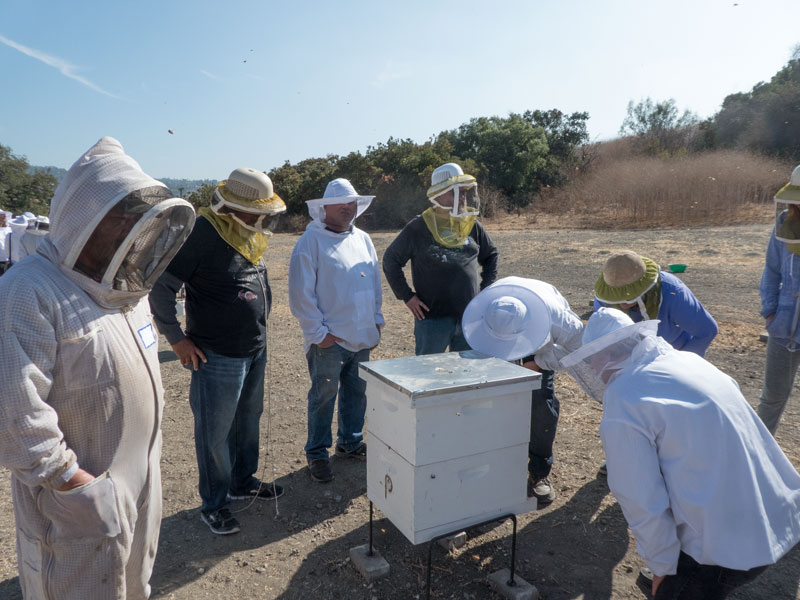
After that we had lunch - a very nice lunch. Here's Mark, the organizer of the seminar, talking to us at lunch.
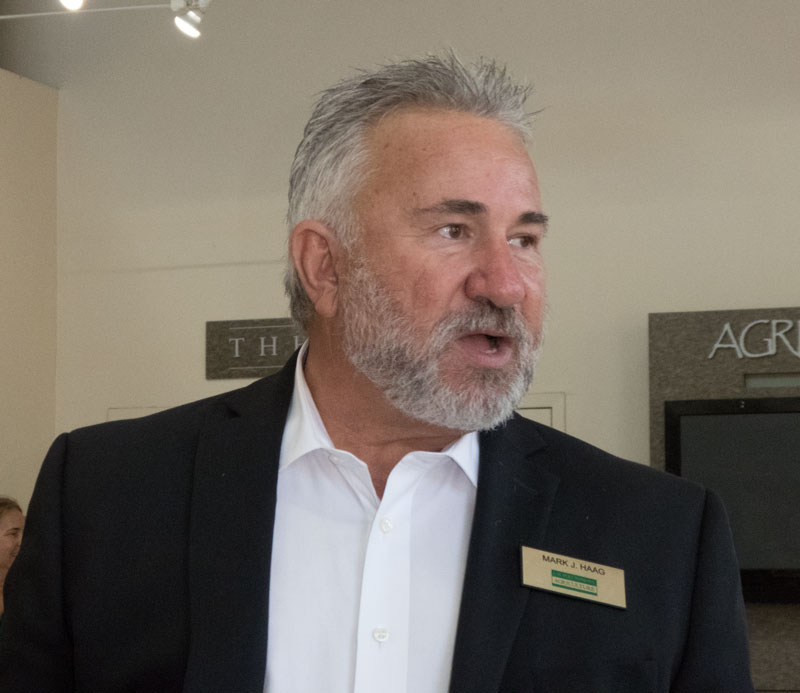
After lunch we had a session with another beekeeper (I don't have his name with me right now). His presentation was similar to Bill's (our first presentation). He was very good at involving the students in the session.
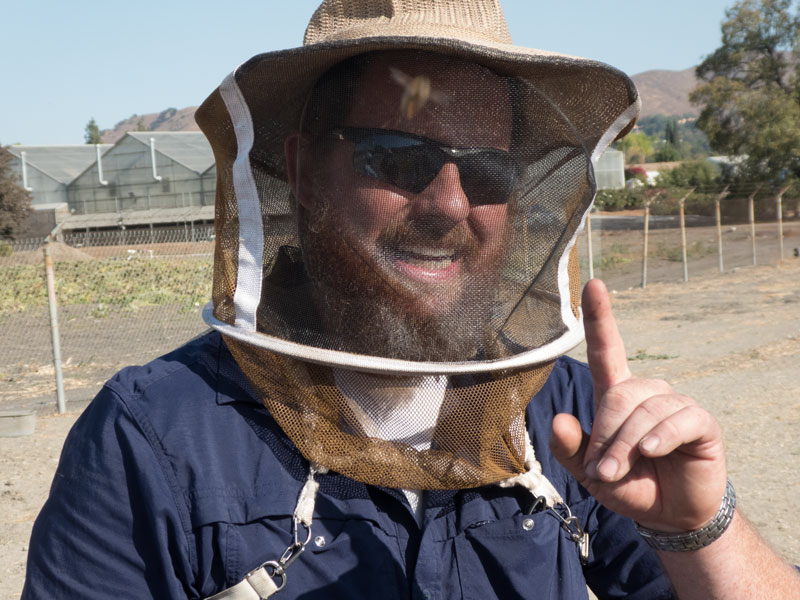
Here he's working with one of the students to examine a frame of brood. I think the students really appreciated his presentation but it was mostly things that I already knew.
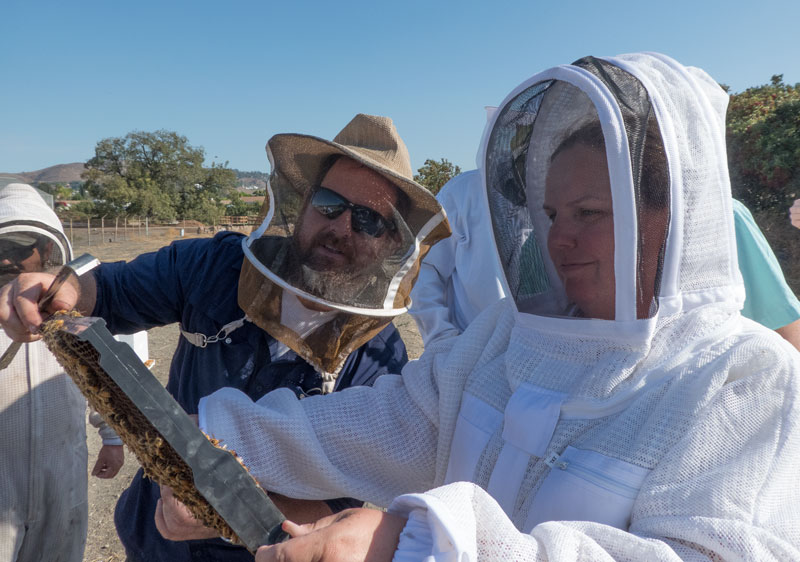
Our next station was with a beekeeper who spent and HOUR telling us how to light a smoker! Give me a break. If you need an hour to learn how to light a smoker you're in trouble.
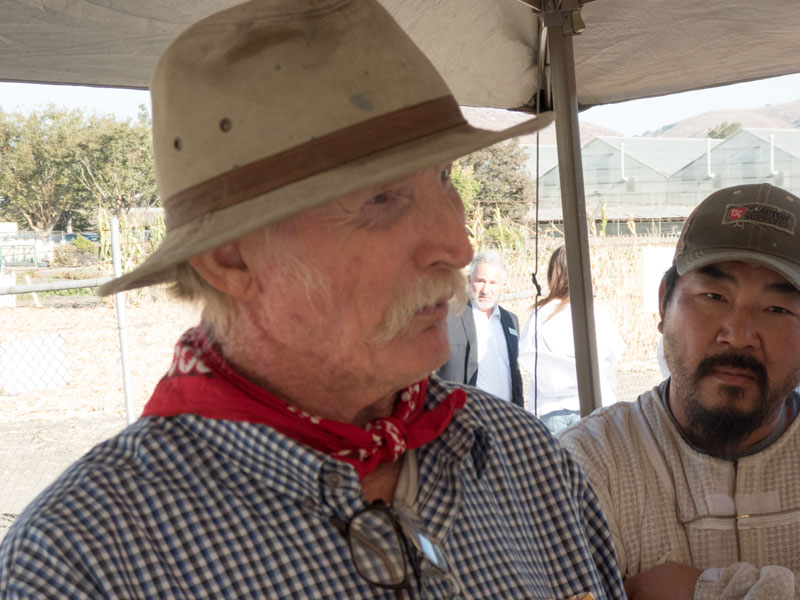
I really tuned out of this presentation and was about to leave before the last session. I'm glad I didn't because the last session was really information dense. This instructor is Sean Crowley (if I got his name right). He's a commercial beekeeper and I believe he said he keeps feral bees (not sure).
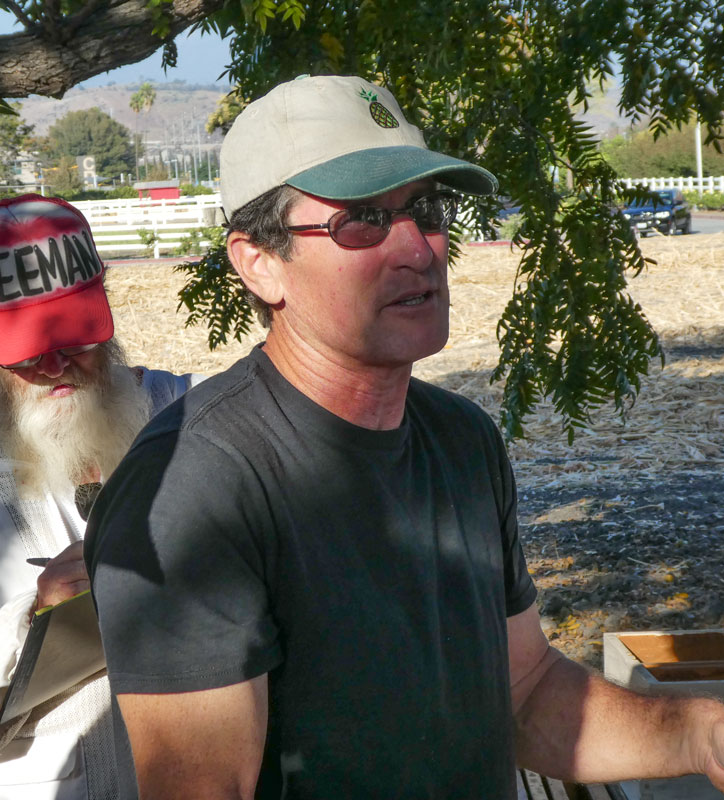
He had a lot of stuff to show and went from station to station quickly. But the information was very useful. He had reasons why he does things certain ways and was very willing to explain why he chose the techniques he did.
One thing I really liked was the uses wood pellets - that you'd use in a wood stove - and lights them with a torch similar to what you'd use to sweat copper pipe. He pointed out that the pellets were cheap and the smoker would stay smoking for a very long time. I'm going to use that idea.
He uses plastic foundation in wooden frames. He talked about the different sizes of bee boxes and why he uses what he does. He explained excluders and when he uses them and when not. Different kinds of bottom boards and why he favors non-screened bottom boards. He had a jig to demonstrate how he assembles wooden frames. It was a lot to fit into an hour and all good, valuable information.
I didn't take enough pictures of his presentation - I was too involved in listening to him - sorry. I wish there had been more time with him.
And that was the day. I hope they offer an advanced course one day and get instructors who are a bit more experienced with and favorable towards feral bees.